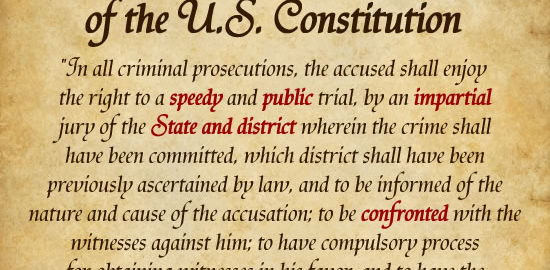LLM Bar Exam, LLC v. Barbri, Inc.
No. 17-3463-cv
Second Circuit Court of Appeals
Decided: April 25, 2019
The Alleged Conspiracy: Bribery, Monopolization, Kickbacks and Racketeering
In 2016, LBE, a bar exam prep company, filed a lawsuit against Barbri and several law schools claiming conspiracy to restrain trade, monopolization, and attempted monopolization in violation of the Sherman Act, 15 U.S.C. §§ 1 and 2, and racketeering in violation of the Racketeer Influenced and Corrupt Organizations (“RICO”) Act, 18 U.S.C. § 1962(c). Unpersuaded, the District Court dismissed each of LBE’s claims of racketeering.
LLM Bar Exam, LLC (“LBE”) is a company that offers courses for foreign attorneys who wish to obtain Master of Law, or “LL.M.” degrees from U.S. law schools. Barbri, Inc. provides bar prep courses to U.S. law school graduates as well as LL.M. graduates and is a direct competitor of LBE.
LBE filed a racketeering lawsuit against Barbri, alleging they were forced out of business due to a conspiracy between and among Barbri and several law schools, including Harvard, NYU, and Columbia. LBE alleged that Barbri maintained a monopoly over the market by donating money to schools, bribing their administrators, and hiring faculty in exchange for promotion of Barbri’s products.
LBE appealed to the Second Circuit, challenging the dismissal of its Sherman Act and RICO claims. As to the RICO claim, LBE asserted that there were sufficient facts to show that defendants-appellees engaged in “a pattern of racketeering activity” within the meaning of RICO for the “common purpose” of using “dishonest means to wrest customers from LBE in the LLM Market.”
Ultimately, the Second Circuit upheld the District Court’s decision to dismiss LBE’s complaint because they failed to state a plausible claim of relief. The Court provided no further analysis.
Civil RICO Racketeering Claims: Strict Requirements Limit Success
On the criminal side of RICO, a convicted defendant can receive a lengthy prison sentence. However, criminal liability is not the only potential consequence of a RICO violation. Alleged victims of racketeering may bring a civil suit as a mechanism for receiving compensation for injury.
A successful RICO claim must demonstrate:
- tangible financial loss;
- a pattern of criminal activity (although a conviction is not necessary);
- the claim is brought within the four-year statute of limitations.
RICO claims are often dismissed by courts because plaintiffs fail to show the defendant actually committed racketeering activities. Thus, the standard for a successful civil RICO suit is rarely met. Predicate acts that are required in RICO claims include extortion, kickbacks, money laundering, bribery, wire and mail fraud and more.
RICO Racketeering Claims under 18 U.S.C. § 1962(c)
Among other claims, LBE alleged Barbri engaged in affecting interstate or foreign commerce by violating section § 1962(c) of the RICO Act. 18 U.S.C. § 1962(c) makes it illegal for a person who is employed by or associated with an enterprise engaged in or affecting interstate or foreign commerce to conduct or participate in the conduct of the enterprise’s affairs through a pattern of racketeering or collection of unlawful debts.
For a successful showing of a RICO violation under §1962(c), the plaintiff must demonstrate the defendant conducted or participated in conduct, that the conduct was of an enterprise, and that there was a pattern of racketeering activity.
A showing of a “pattern” of racketeering activity requires proof that the acts are related to and that the acts posed a threat of continued criminal activity. “Related” acts will generally have the same goal, participants, or victims, or methods of commission. The activity is “continuing” where the conduct occurred during the course of a confined period of time or past conduct that threatens future repetition.
Under RICO, an “enterprise” is defined as any group of individuals associated in fact. An association-in-fact is proved by evidence of an ongoing organization (formal or informal) and by evidence that the associates function as a continuing unit. A civil RICO complaint must show that each defendant participated in the operation of the enterprise.
To decide whether a pattern of racketeering activity exists, courts have historically considered the following factors:
- the number of victims
- the nature and quantity of predicate acts
- how long the activity took place
- whether there were distinct injuries
- the quantity of distinct transactions involving the conduct
LBE’s Unsuccessful RICO Claims
Although the Second Circuit does not make clear why, specifically, LBE failed to establish a showing that Barbri engaged in a pattern of racketeering activity, the District Court’s decision outlines reasons for dismissal.
As an initial matter, the District Court addressed the vagueness of the complaint alleging wire and mail fraud communications, noting the complaint failed to specify the fraudulent content of the communications, who made the statements, and when the statements were made. “RICO claims premised on mail fraud must be particularly scrutinized . . . ,” the Court held. Like many other civil RICO claims, LBE’s complaint failed to meet the strict requirements of demonstrating a pattern of racketeering.
The District Court further found that LBE failed to show that the defendants formed an enterprise-in-fact because the complaint did not indicate they acted as one unit. Moreover, the complaint omitted any evidence that each individual participated in the operation it alleged.
Chances of winning a RICO civil suit are slim. As this case demonstrates, courts scrutinize civil RICO claims with careful eyes and the requirements for showing sufficient evidence for a RICO violation exists are extensive.


